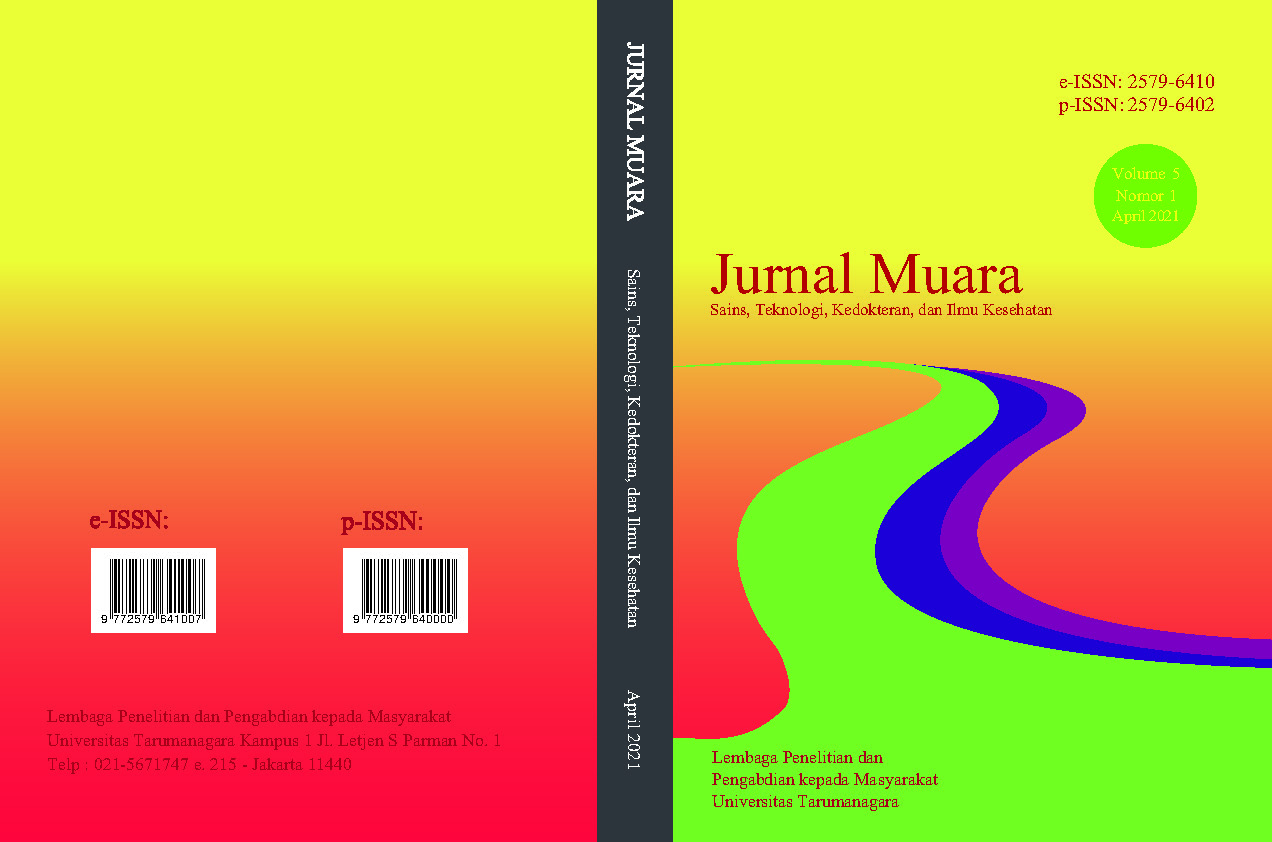ANALISIS KECEPATAN JATUH SEDIMEN PADA SUNGAI CIBEET, JAWA BARAT
Main Article Content
Abstract
Cibeet River is one of the branch of the Citarum river in West Java province with a length of 101 km. Cibeet River is one of the rivers supplying water and sediment to the West Tarum irrigation channel or known as the Kalimalang. In this research, the sample used was in the form of mud taken at the Cibeet River Estuary. This research is focused on settling velocity which is a parameter for sedimentation in order to improve numerical modeling and conceptual understanding of sediment dynamics, especially mud. Sediment research is carried out in the Soil Mechanics laboratory and Hydraulics laboratory. Bottom withdrawal tube experiments were carried out using 5 types of salinity and 6 kinds of sediment concentrations. The purpose of the study was to obtain settling velocity and compare laboratory results with the Stokes law approach and compare the relationship between settling velocity with sediment concentration and salinity. The optimum salinity is obtained at 15 ‰, and the optimum sediment concentration at 4700 ppm with an average fall speed of 37,28 mm / s. The results from the laboratory are not in accordance with the Stokes law due to the influence of flocculation from the cohesive nature of the mud sediment, so that using the Stokes law approach cannot calculate the velocity of falling sediment on the mud.
Keywords: concentration; salinity; sediment; settling velocity
Abstrak
Sungai Cibeet merupakan salah satu anak sungai dari sungai Citarum di provinsi Jawa Barat dengan panjang 101 km. Sungai Cibeet merupakan salah satu sungai pemasok air dan sedimen ke saluran irigasi Tarum Barat atau dikenal sebagai Kalimalang. Pada penelitian ini, sampel yang digunakan berupa lumpur yang diambil di Muara Sungai Cibeet. Penelitian ini difokuskan pada kecepatan jatuh sedimen yang merupakan parameter untuk sedimentasi demi meningkatkan permodelan numerik dan pemahaman konsep dari dinamika sedimen terutama lumpur. Penelitian ini dilakukan di laboratorium Mekanika Tanah dan laboratorium Hidrolika, memakai bottom withdrawal tube, dilakukan dengan menggunakan 5 macam jenis salinitas dan 6 macam konsentrasi sedimen. Penelitian ini membandingkan antara hasil laboratorium dengan pendekatan yaitu hukum Stokes serta membandingkan hubungan antara konsentrasi sedimen dengan salinitas. Untuk salinitas didapat optimum pada saat 15‰, dan konsentrasi sedimen yang optimum pada saat 4700 ppm dengan kecepatan jatuh rata-rata 37,28 mm/s. Hasil dari laboratorium tidak sesuai dengan pendekatan hukum stokes dikarenakan adanya pengaruh flokulasi dari sifat sedimen lumpur yang kohesif, sehingga menggunakan pendekatan hukum stokes tidak bisa untuk menghitung kecepatan jatuh sedimen pada lumpur.
Article Details
This work is licensed under a Jurnal Muara Sains, Teknologi, Kedokteran dan Ilmu Kesehatan Creative Commons Attribution-ShareAlike 4.0 International License.
Authors transfer copyright or assign exclusive rights to the publisher (including commercial rights)
References
Dearnaley, M. P. (1996). Direct Measurments of Settling Velocities In The Owen Tube: A Comparison With Gravimetric Analysis. Journal of Sea Research, 36(1), 41-47. https://doi.org/10.1016/S1385-1101(96)90769-8
Krone, R. B. (1962). Flume Studies of the transport of sediment in esturial shoaling processes. Berkeley: Hydraulic Engineering Laboratory and Sanitary Engineering Research Laboratory, University of California.
Krumbein, W. C., & Sloss, L. L. (1971). Stratigraphy and sedimentation. San Fransisco: W.H. Freeman.
Pranoto, W. A. (2010). Experimental Study of Sediment Settling Velocity in Citanduy River, West Java. Civil Engineering Journal, 1(2), 88-97.
Yang, C. T. (1996). Sediment Transport: Theory And Practice. Singapore: McGraw-Hill Book Co.



